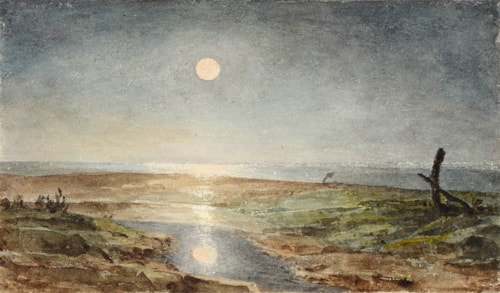
Joseph Michael GANDY
London 1771 - Plympton 1843
Biography
An architect by profession, Joseph Gandy was trained in the office of James Wyatt from 1786 onwards, before enrolling in the Royal Academy Schools in 1789. Following a period of three years spent in Rome, he returned to London where he was employed as a draughtsman by the architect Sir John Soane, for whom he began working in 1798. Although long regarded by scholars as merely an employee of Soane, translating the latter’s architectural designs into full-scale watercolours, it is now known that Gandy often produced drawings after his own inventions. (That he was certainly held in high regard by Soane is shown in the comments made by the architect in a lecture presented at the Royal Academy in 1813: ‘A superior manner of Drawing is absolutely necessary, indeed it is impossible not to admire the beauties and almost magical effects in the architectural drawings of a Clérisseau, a Gandy, or a Turner.’) Gandy maintained a modest architectural practice of his own, and regularly exhibited a remarkable series of large-scale architectural history watercolours and capriccios - grandiose subjects inspired by Ancient Greece and Rome – in the architecture section at the Royal Academy between 1789 and 1833. (He also showed fourteen works at the British Institution in 1820 and 1821). In 1803, Gandy was admitted as an Associate of the Royal Academy, largely on the strengths of his undoubted skills as an architectural draughtsman, and despite the fact at that time he had not received any commissions as a practicing architect. (Indeed, he achieved no further promotion within the Academy, and was never elected an Academician.) Gandy also produced a number of designs for stage sets, and contributed drawings to the antiquarian topographer John Britton’s The Architectural Antiquities of Great Britain, published between 1807 and 1826, and The Cathedral Antiquities of England, which appeared between 1814 and 1835.




